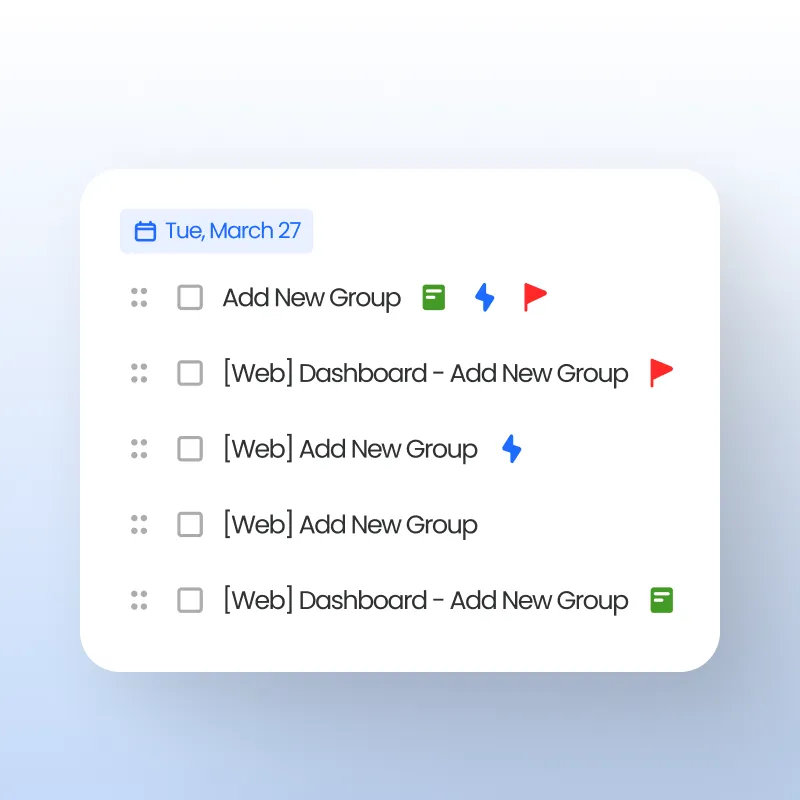
Qubiql is a early stage startup focusing on task management (to-do lists, reminders, and notes). It also enable you to collaborate with others, with its virtual desktop feature and team management capabilities.
Identified UI/UX issues through a heuristic evaluation.
Conducted usability tests and in-depth interviews to gather relevant data
Performed competitor analysis to get a broader perspective of the market
Analyzed research data, presented findings, and design solutions recommendations based on the results
As the product grew, so did complexity. This led to an inconsistent structure and friction in how users created and managed tasks. Some noticabale one including:
Calendar view lacked usability, make it harder for user to navigate.
Multiple entry points for creating tasks.
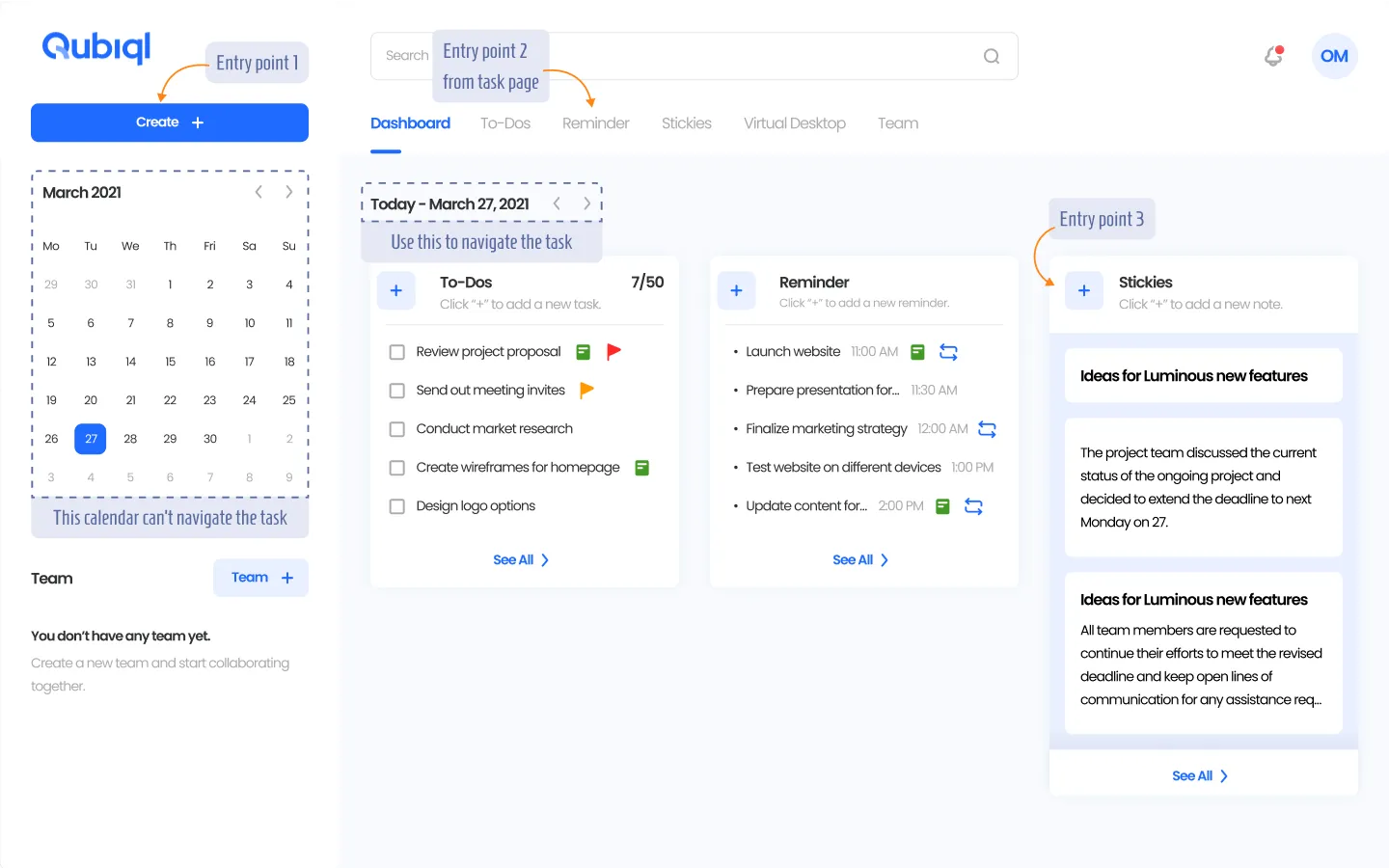
Gain insight into how actual users engage with Qubiql.
Identify any issues in the design or functionality.
Identify potential areas for improvement in both the design and functionality.
This was the first user research initiative conducted for Qubiql — and also the first within the company. To keep it short and actionable, we planned it as small-scale project. The entire process, from planning and user testing to final presentation, was completed in 2 weeks.
We limited the scope of our research and defined the reseach questions as follow:
How do users create new tasks from the dashboard?
How do users find tasks by date?
How do users manage tasks with different status?

Image: Research timeline
We ran tests using the live product with three internal participants. Although the sample was small, each session lasted one hour and yielded valuable insights about confusion and inefficiency in task flow. We also conducted heuristic evaluations and performed a competitive analysis.

Image: User research summary
From the research we identify recurring pain points, uncover patterns in user behavior, and validate hypotheses related to task creation and management.
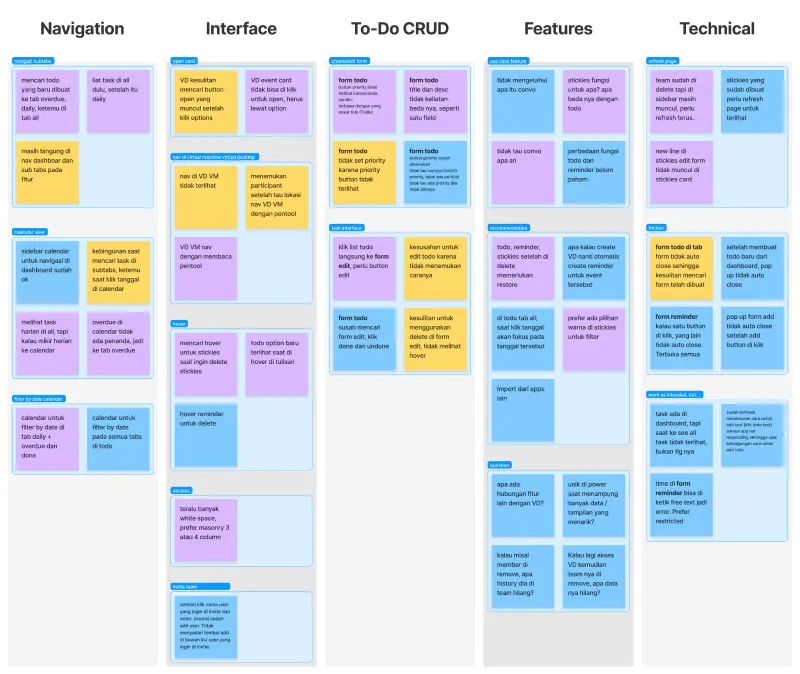
Image: Card sorting
Too many entry points caused confusion in creating tasks.



Image: User journey — the selected flow is highlighted in purple
The calendar in sidebar take much space without enough usability.


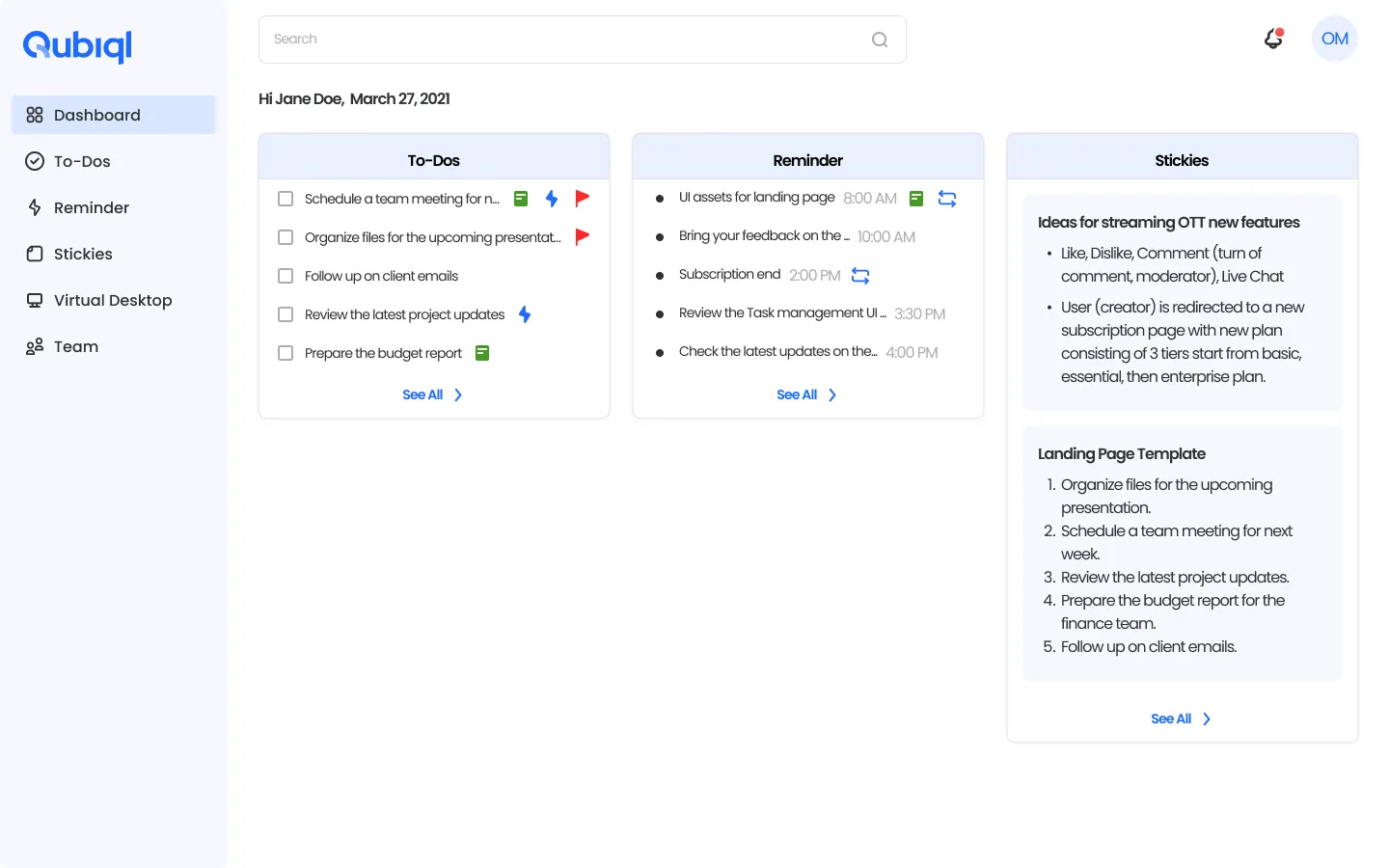
Image: New dashboard UI for Qubiql
Users struggled to differentiate between To-Do and Reminder tasks.


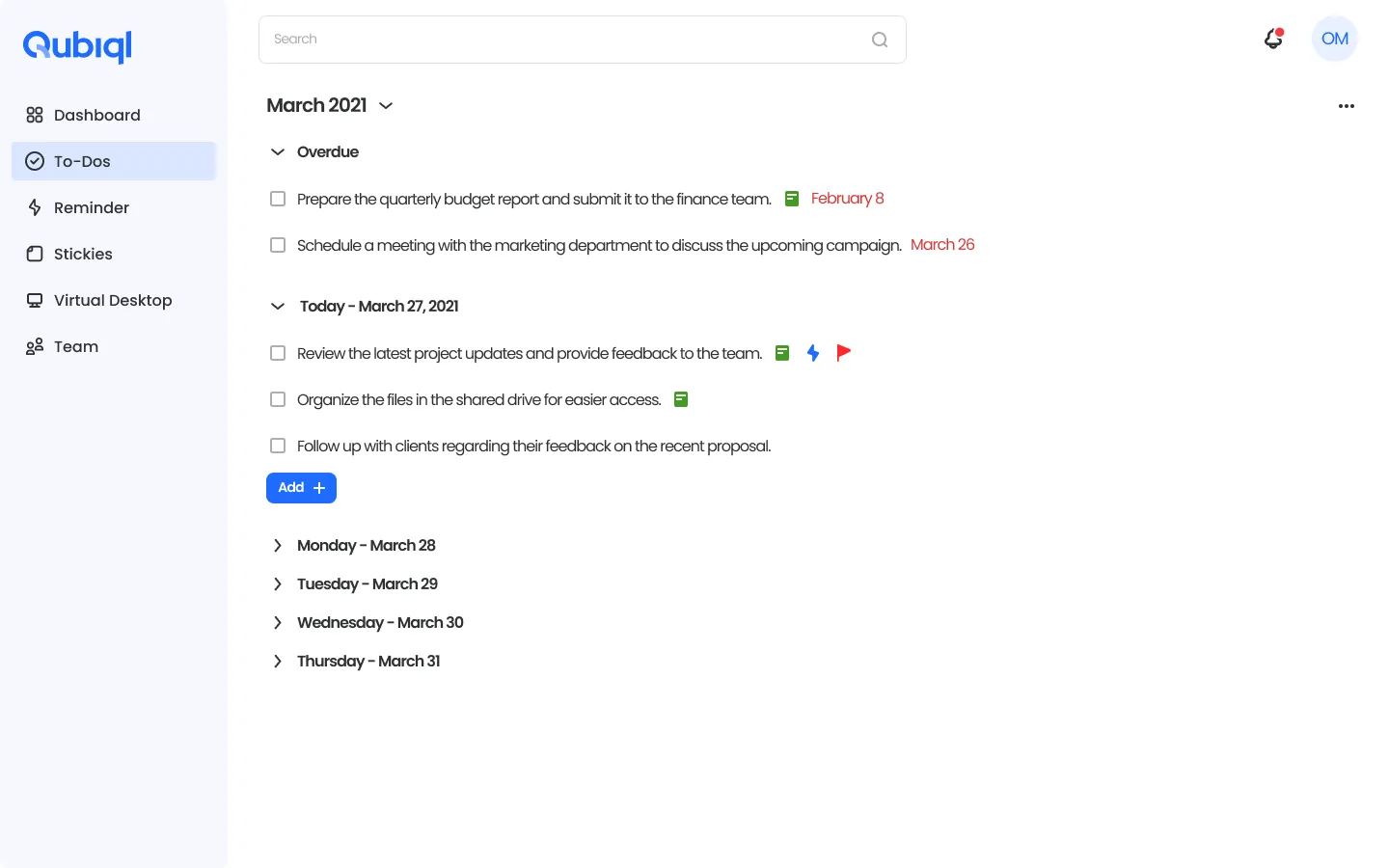
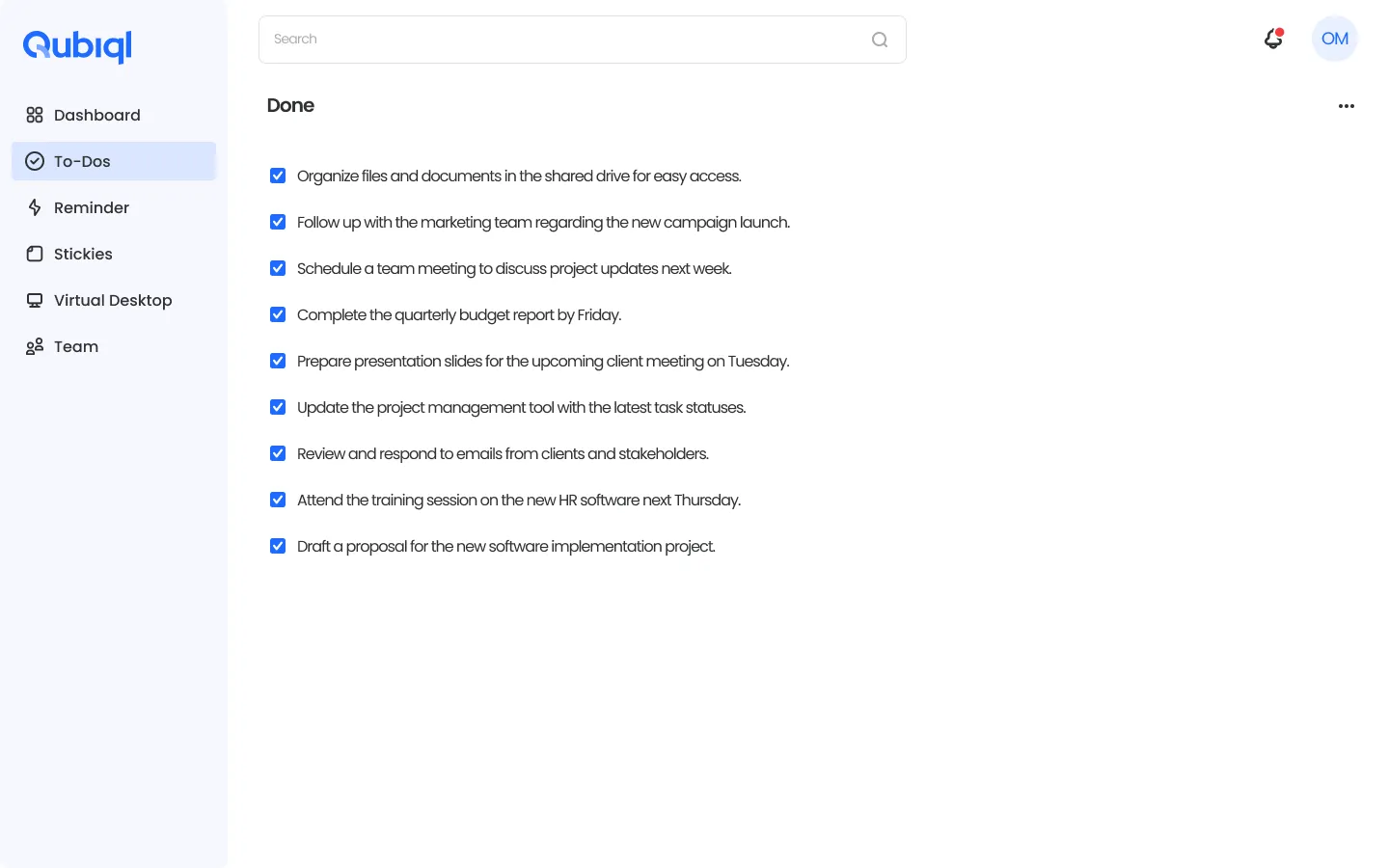
Apply responsive interface and consistent UI in form component for all features.



